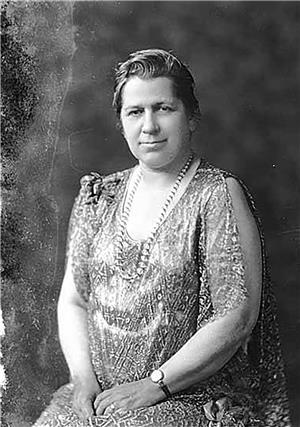On March 9, 1926, Bertha Knight Landes (1868-1943) is elected mayor of Seattle, becoming the first woman executive of a major American city. Serving only a single two-year term, she followed through on her pledge to perform "municipal housekeeping" and led an honest, scandal-free administration.
When Landes ran for city council in 1922, her husband Henry said, "It's simply the natural enlargement of her sphere. Keeping house and raising a family are woman's logical tasks, and in principle, there's no difference between running one home and a hundred thousand." Four years later, she used this platform of "municipal housecleaning" to convince voters that change was needed in Seattle government, which at the time was tainted with hints of corruption.
Running against incumbent Edwin J. "Doc" Brown, she won easily. During her term, she advocated municipal ownership of utilities such as City Light and street railways. She also fought hard against bootleggers and reckless drivers, and strictly enforced regulations for dance halls and cabarets. The Civic Auditorium, later renovated as the Seattle Opera House, is but one of her many legacies.
Despite these and other accomplishments, the popular sentiment was that Seattle should have a man in charge. Although endorsed by newspapers, the Central Labor Council, the Prohibition Party, and women's organizations, Landes was defeated in 1928 by Frank Edwards, a political unknown.
Landes went on to other successes. She became the first woman to serve as Moderator of Washington's Conference of Congregational and Christian Churches and was also elected national president of the Soroptimists, a professional women's organization. She wrote many articles for national publications, urging women to enter politics, their "natural sphere."
Landes lived in Seattle until 1941. In 1943, she died at her son's home in Ann Arbor, Michigan, at the age of 75.

